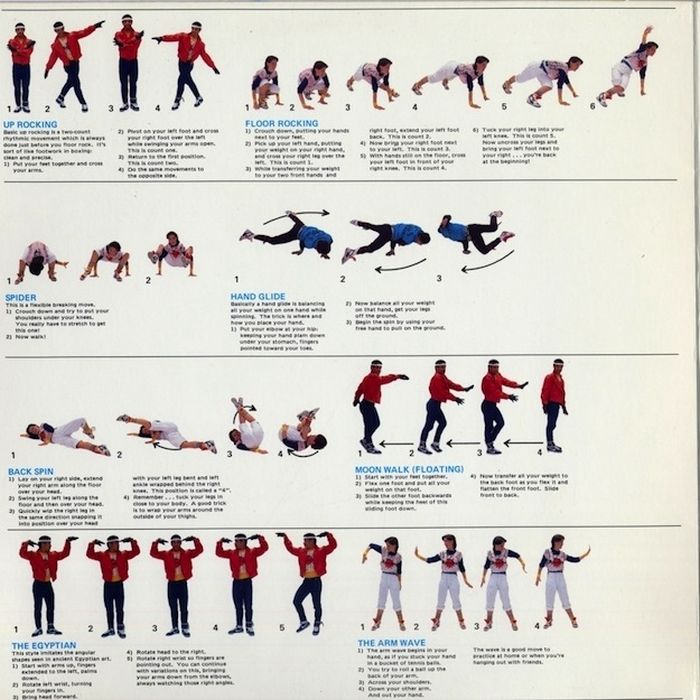
The popper can also choose to follow the music more freely such as by timing the pops to the rhythm of a melody or other rhythmic elements. The pops performed by the popper normally occur on every beat or on the distinct back beats. Songs that are generally favored have a straight and steady beat at around 90-120 beats per minute, a 4/4 time signature and a strong emphasis on the back beat, normally by a snare drum or a drum machine. Today, it is common to see popping danced to more current music genres such as modern hip hop (often abstract/ instrumental hip hop) and various forms of electronic dance music such as dubstep. More mainstream hip hop music was also employed by poppers during the 1980s, including Afrika Bambaataa, Kurtis Blow, Whodini and Run DMC. During the 1980s, many poppers also utilized electro music, with artists such as Kraftwerk, Yellow Magic Orchestra, Egyptian Lover and World Class Wrecking Crew. Popular artists include Zapp, Dayton, Dazz Band and Cameo. Having its roots in the late 1970s funk era, Popping is commonly danced to funk and disco music. Popping can be concentrated to specific body parts, creating variants such as arm pops, leg pops, chest pops and neck pops. It is also known as Posing Hard from the Boogaloo tradition, this technique was innovated by the Boogaloo group, the Black Messengers from Oakland. Popping is centered around the technique of popping, which means to quickly contract and relax muscles to create a jerking effect (a pop or hit) in the body. Popping and related styles such as waving and tutting have also been incorporated into the electronica dance scene to some extent, influencing new styles such as liquid and digits and turfing.Īs stated earlier, popping has become the latest umbrella term for a group of closely related styles and techniques rooted in the Boogaloo tradition that have often been combined, evolved or danced together with popping, some of which are seldom seen outside of popping contexts. It is often performed in battles, where participants try to outperform each other in front of a crowd, giving room for improvisation and freestyle moves that are seldom seen in shows and performances, such as interaction with other dancers and spectators. A popping dancer is commonly referred to as a popper.īecause of Popping's cultural Boogaloo roots, Popping developed before Hip Hop's cultural movement and helped influence the tradition of styles of Hip Hop dancing.

However, popping is distinct from breaking and locking, with which it is often confused. These dance styles include the robot, waving and tutting.

Closely related illusory dance styles and techniques are often integrated into popping to create a more varied performance.


It was popularized by a Fresno & Long Beach-based dance group called the Electric Boogaloos that mixed popping techniques to boogaloo. This is done continuously to the rhythm of a song in combination with various movements and poses. The dance is rooted through the rhythms of live funk music, and is based on the technique of Boogaloo's posing approach, quickly contracting and relaxing muscles to cause a jerk or can be a sudden stop in the dancer's body, referred to as a pose, pop or a hit. Popping would be eventually adapted from earlier Boogaloo (freestyle dance) movements in Fresno, California, in the late 1970s by way of California high school gatherings of track & meet events - the West Coast Relays. As Boogaloo spread, it would be referred to as Robottin' in Richmond, California, Strutting movements in San Francisco and San Jose, and the Strikin' dances of the Oak Park community in Sacramento, which were popular through the mid-1960s to the 1970s. Popping is a street dance adapted out of the earlier Boogaloo (funk dance) cultural movement in Oakland, California.


 0 kommentar(er)
0 kommentar(er)
